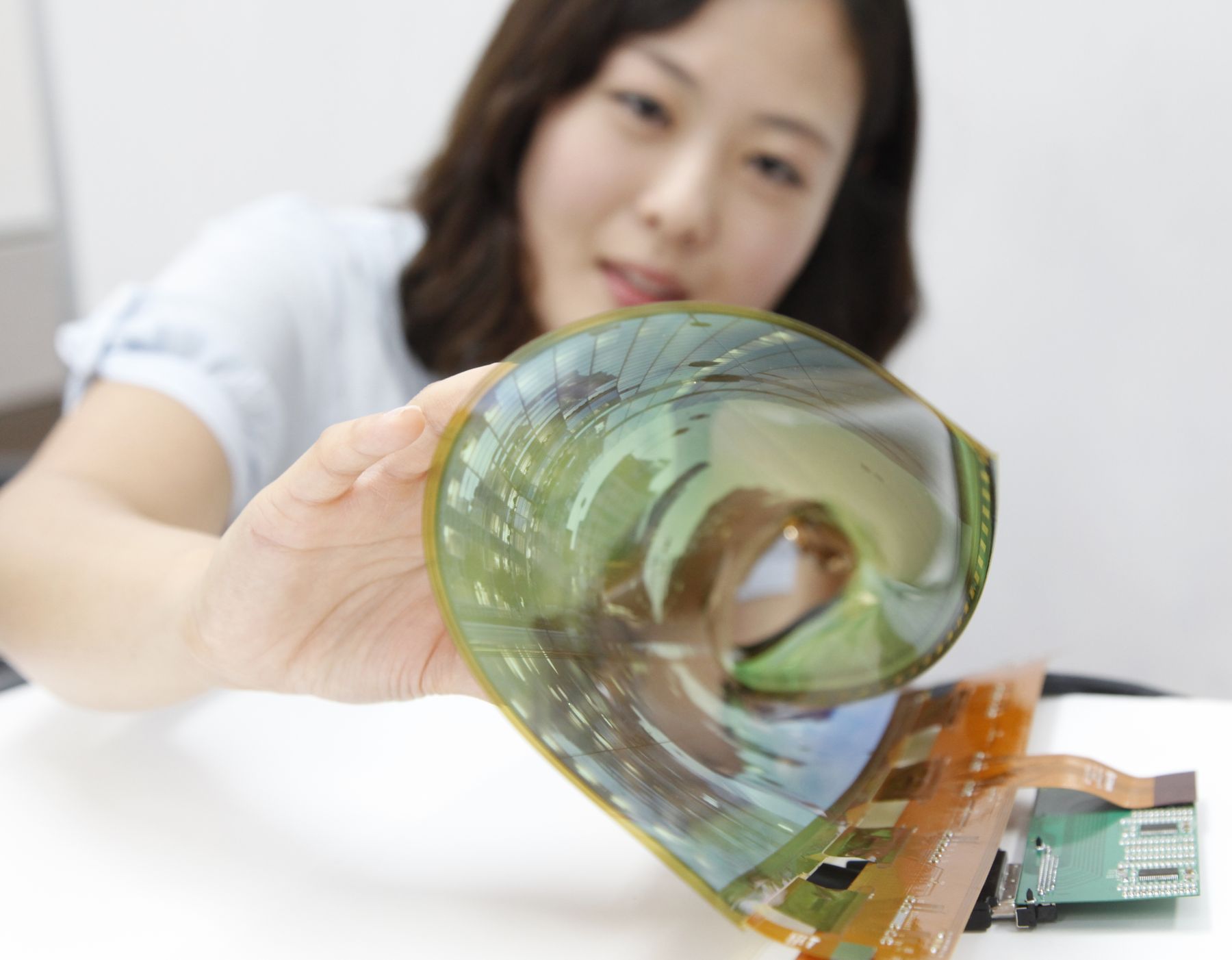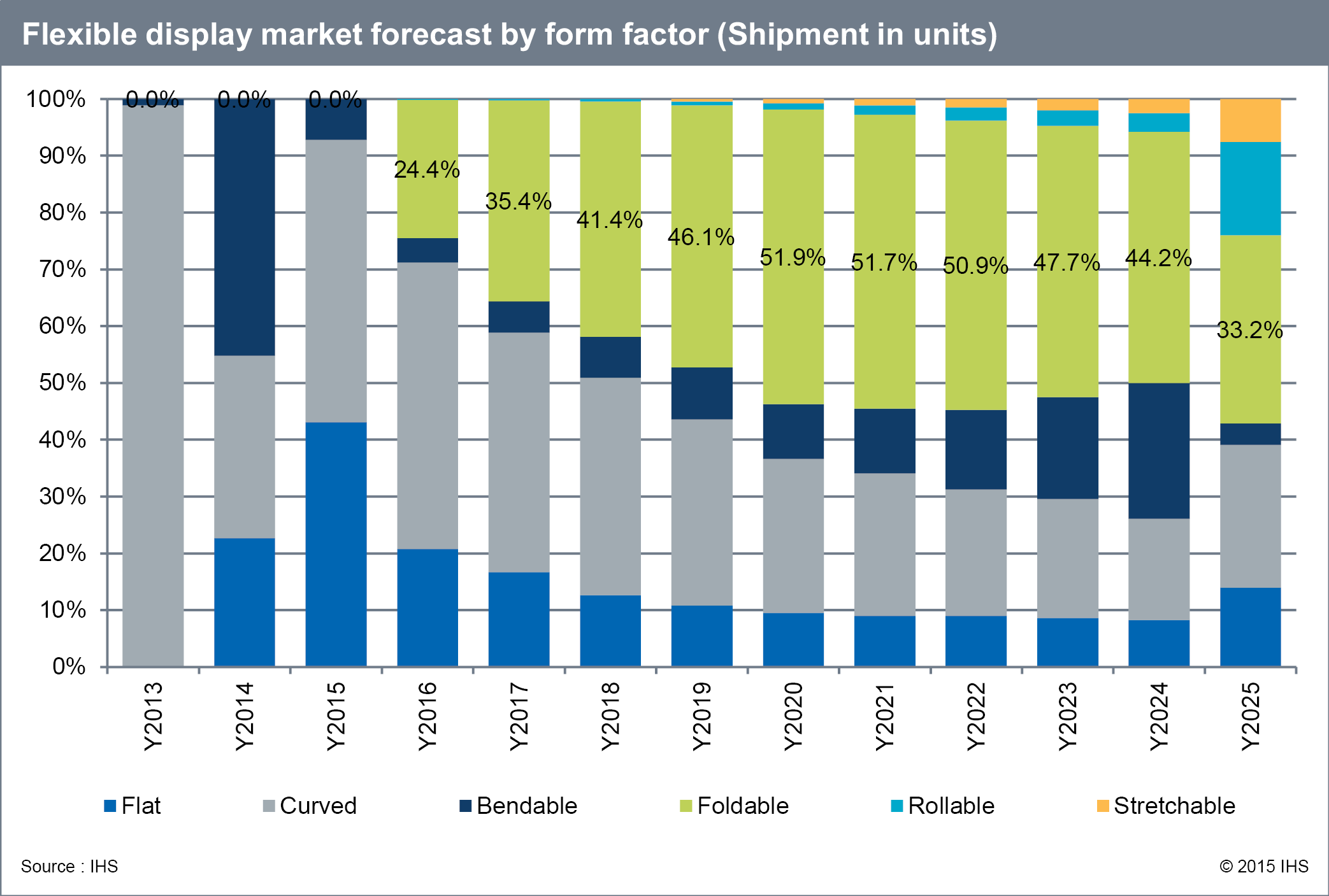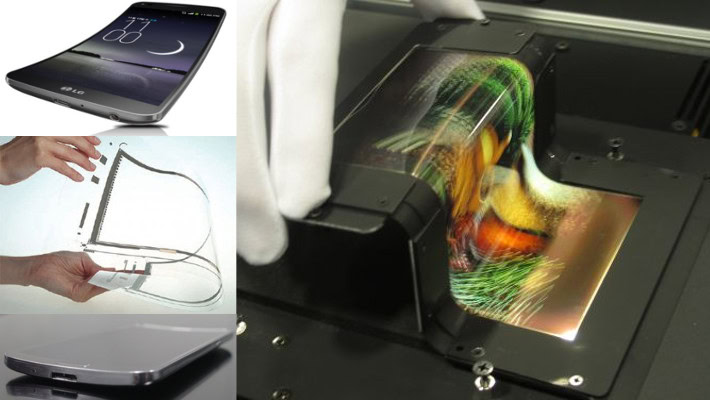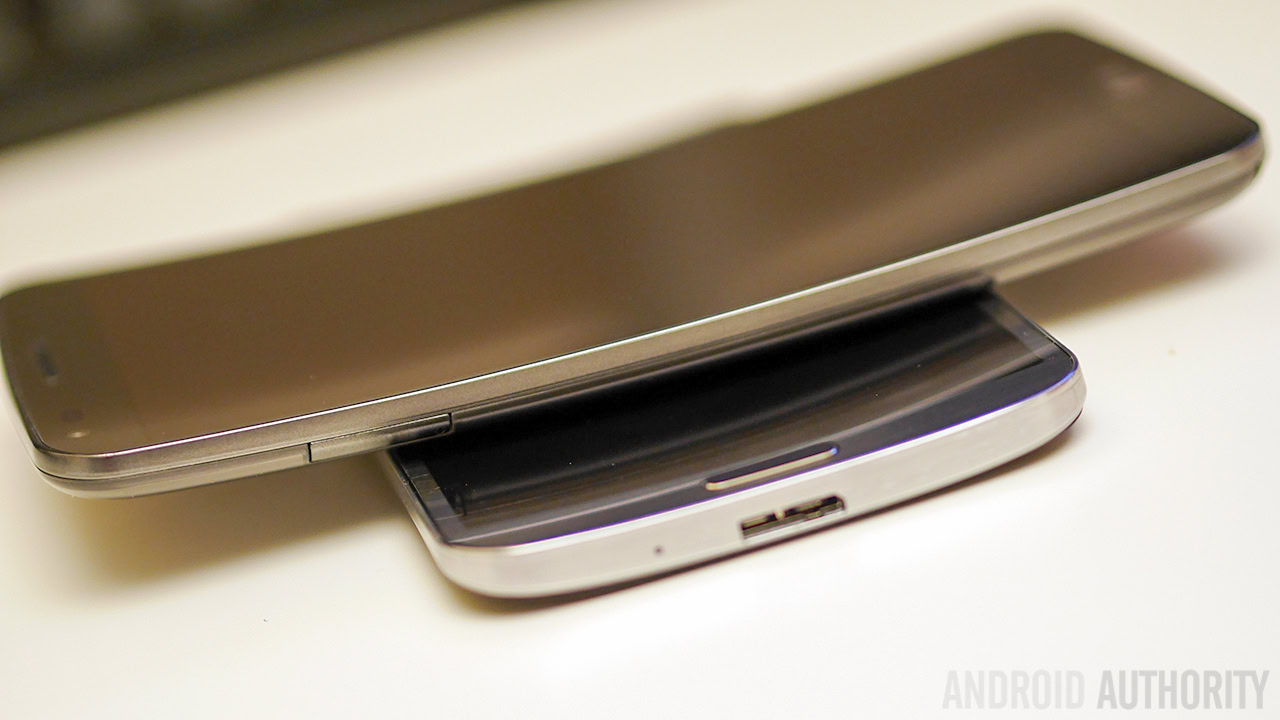Affiliate links on Android Authority may earn us a commission. Learn more.
Report: flexible displays will dominate the future with foldable, rollable and even stretchable panels
Published onSeptember 8, 2015

Flexible displays are not only here to stay, but they are an important part in the future of mobile technology and other types of electronics. IHS Technology estimates that over half of all display shipments will consist of flexible screens by 2024.
The most interesting part of this research’s findings is that other types of interesting panels are expected to dominate the flexible display market. This would include fascinating screens that can be folded, rolled and even stretched. In fact, 51% of all flexible displays are predicted to be foldable by 2020. After this period, the number of folding screens will start lowering in exchange for more of the more adaptable panels.

But what is the purpose of flexible displays? Do we even need them? Surely, you have seen a new genre of smartphones, tablets, wearables and even TVs that take advantage of flexible displays to achieve new form factors. The LG G Flex series, Samsung Galaxy S6 Edge smartphones and a bevy of curved TVs are only the tip of this huge iceberg that is forming, though.
With foldable, rollable and stretchable screens, the industry can introduce plenty of new form factors. This will include more curved screens, and possibly even scrolls or book-shaped tablets. But the truth is this is not the main reason why flexible screens are to dominate the market. These new technologies pose advantages even to those devices which will continue to have a flat design.

Benefits of using flexible displays
- Thinness – Because flexible screens can dump glass enclosures, this also means these can become thinner, effectively giving manufacturers the ability to make slimmer products. Alternatively, they could make the battery bigger or include other hardware.
- Durability – These flexible displays happen to be much stronger than their rigid counterparts. Partly because we have less glass to worry about, but also because flexible material is not nearly as prone to damage upon abuse. The flexible material creates a sort of cushion for the screen, and accidentally bending this component won’t cause it to break most times (even though other parts of the phone are still vulnerable).
- Inspiration – It is no longer a mystery that flexible products are more durable; this will call for more manufacturers to produce other components with similar characteristics. For example, Stanford researchers are already working on flexible transparent batteries, and the Korean Advanced Institute of Science and Technology is also making flexible RAM memory modules.
- New input methods? – This one may be pushing it, but I am hoping to see this flexibility turning into more functionality. Maybe you could bend in/out to zoom, or have the device vibrate if you sit on the phone and are bending it too much.
Next time someone tells you about these flexible screens, stop and think about what this actually means and don’t dismiss these technologies as pure gimmicks. I will definitely geek out and continue dreaming of that smartphone scroll, but you can certainly keep your black slabs. Flexibility is here to stay, and this can only mean good things for all of us as consumers!
